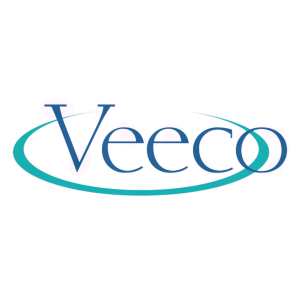Forward-Looking Statements
Certain statements included in this document, and any related oral statements, that are not historical facts are forward-looking statements for purposes of the safe harbor provisions under the United States Private Securities Litigation Reform Act of 1995. Statements in this document other than historical facts, such as statements pertaining to: (i) future industry demand for semiconductors and wafer fabrication equipment; (ii) future development of regulatory landscape; (iii) Axcelis’ or Veeco’s market position for the future; (iv) forecasts of financial measures for future periods; (v) long-term financial targets and underlying assumptions; (vi) the future investment plan for research and development, technology and infrastructure; (vii) future shareholder returns; and (viii) potential synergies or other benefits of a potential transaction between Axcelis and Veeco, are forward-looking statements.
Any statements that involve discussions with respect to predictions, expectations, beliefs, plans, projections, objectives, assumptions, future events, or performance (often but not always using phrases such as “expects” or “does not expect,” “is expected,” “anticipates” or “does not anticipate,” “plans,” “budget,” “scheduled,” “forecasts,” “estimates,” “believes” or “intends” or variations of such words and phrases or stating that certain actions, events or results “may” or “could,” “would,” “might” or “will” be taken to occur or be achieved) are not statements of historical fact and may be forward-looking information and are intended to identify forward-looking information.
These forward-looking statements are based on current information and assumptions and involve a number of risks and uncertainties, including relating to obtaining applicable regulatory and stockholder approvals, satisfying other closing conditions to the proposed transaction, the expected tax treatment of the proposed transaction, the expected timing of the proposed transaction and the integration of the businesses and the expected benefits, cost savings, accretion, synergies and growth to result therefrom. These risks include, among other things: failure to obtain applicable regulatory or stockholder approvals in a timely manner or otherwise; failure to satisfy other closing conditions to the proposed transaction or to complete the proposed transaction on anticipated terms and timing; negative effects of the announcement of the proposed transaction; risks that the businesses will not be integrated successfully or that the combined company will not realize expected benefits, cost savings, accretion, synergies and/or growth, or that such benefits may take longer to realize or may be more costly to achieve than expected; the risk that disruptions from the proposed transaction will harm business plans and operations; risks relating to unanticipated costs of integration; significant transaction and/or integration costs, or difficulties in connection with the proposed transaction and/or unknown or inestimable liabilities; restrictions during the pendency of the proposed transaction that may impact the ability to pursue certain business opportunities or strategic transactions; potential litigation associated with the proposed transaction; the potential impact of the announcement or consummation of the proposed transaction on Axcelis’, Veeco’s or the combined company’s relationships with suppliers, customers, employees and regulators; and demand for the combined company’s products. Actual results may differ materially from those projected in such statements due to various factors, including but not limited to: economic, political and social conditions in the countries in which Axcelis and Veeco, their respective customers and suppliers operate; disruption to Axcelis’ and Veeco’s respective manufacturing facilities or other operations, or the operations of Axcelis’ and Veeco’s respective customers and suppliers, due to natural catastrophic events, health epidemics or terrorism; ongoing changes in the technology industry, and the semiconductor industry in particular, including future growth rates, pricing trends in end-markets, or changes in customer capital spending patterns; Axcelis’, Veeco’s and the combined company’s ability to timely develop new technologies and products that successfully anticipate or address changes in the semiconductor industry; Axcelis’, Veeco’s and the combined company’s ability to maintain their respective technology advantage and protect their respective proprietary rights; Axcelis’, Veeco’s and the combined company’s ability to compete with new products introduced by their respective competitors; Axcelis’, Veeco’s and the combined company’s ability or the ability of their respective customers to obtain U.S. export control licenses for the sale of certain products or provision of certain services to customers in China.
For other factors that may cause actual results to differ materially from those projected and anticipated in forward-looking statements in this Current Report on Form 8-K, please refer to Axcelis’ most recent Annual Report on Form 10-K and Veeco's most recent Annual Report on Form 10-K, and other subsequent filings with the SEC made by Axcelis and/or Veeco. Unless required by law, we assume no obligation to, and do not currently intend to, update these forward-looking statements.







